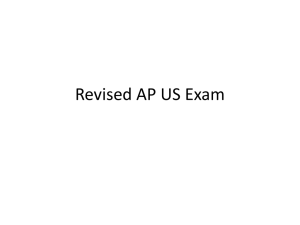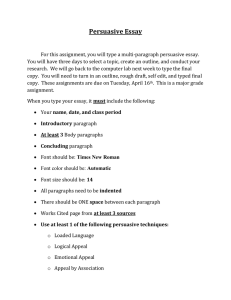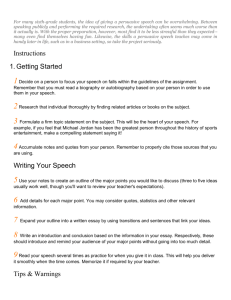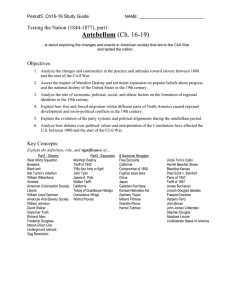ap us history s. a
advertisement
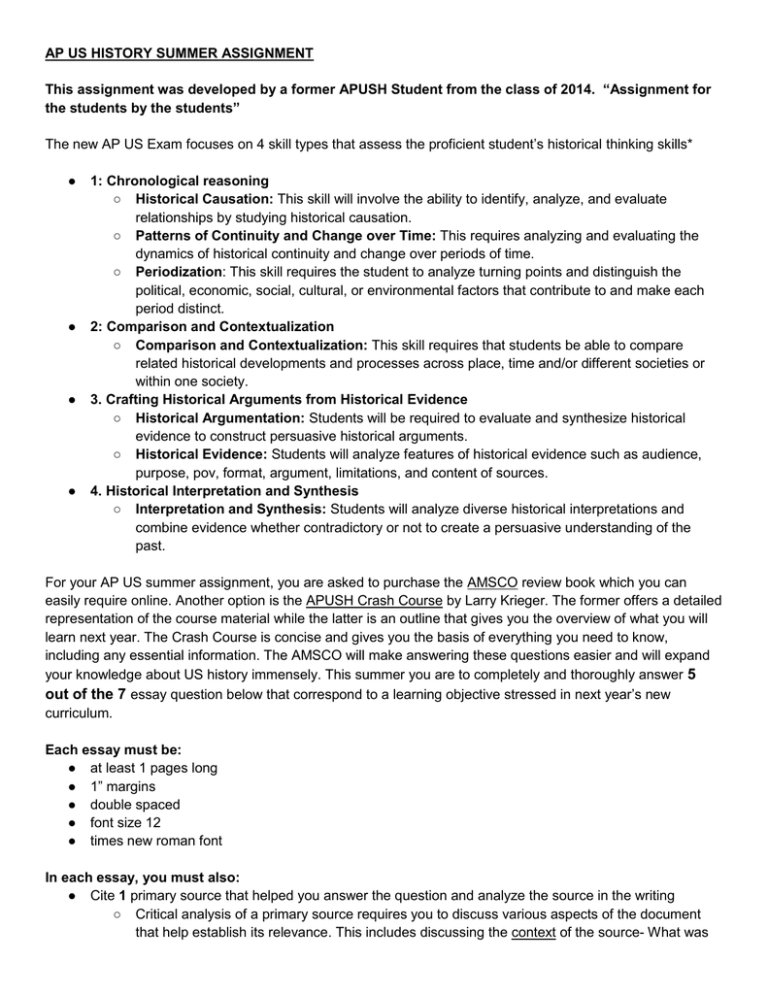
AP US HISTORY SUMMER ASSIGNMENT This assignment was developed by a former APUSH Student from the class of 2014. “Assignment for the students by the students” The new AP US Exam focuses on 4 skill types that assess the proficient student’s historical thinking skills* ● ● ● ● 1: Chronological reasoning ○ Historical Causation: This skill will involve the ability to identify, analyze, and evaluate relationships by studying historical causation. ○ Patterns of Continuity and Change over Time: This requires analyzing and evaluating the dynamics of historical continuity and change over periods of time. ○ Periodization: This skill requires the student to analyze turning points and distinguish the political, economic, social, cultural, or environmental factors that contribute to and make each period distinct. 2: Comparison and Contextualization ○ Comparison and Contextualization: This skill requires that students be able to compare related historical developments and processes across place, time and/or different societies or within one society. 3. Crafting Historical Arguments from Historical Evidence ○ Historical Argumentation: Students will be required to evaluate and synthesize historical evidence to construct persuasive historical arguments. ○ Historical Evidence: Students will analyze features of historical evidence such as audience, purpose, pov, format, argument, limitations, and content of sources. 4. Historical Interpretation and Synthesis ○ Interpretation and Synthesis: Students will analyze diverse historical interpretations and combine evidence whether contradictory or not to create a persuasive understanding of the past. For your AP US summer assignment, you are asked to purchase the AMSCO review book which you can easily require online. Another option is the APUSH Crash Course by Larry Krieger. The former offers a detailed representation of the course material while the latter is an outline that gives you the overview of what you will learn next year. The Crash Course is concise and gives you the basis of everything you need to know, including any essential information. The AMSCO will make answering these questions easier and will expand your knowledge about US history immensely. This summer you are to completely and thoroughly answer 5 out of the 7 essay question below that correspond to a learning objective stressed in next year’s new curriculum. Each essay must be: ● at least 1 pages long ● 1” margins ● double spaced ● font size 12 ● times new roman font In each essay, you must also: ● Cite 1 primary source that helped you answer the question and analyze the source in the writing ○ Critical analysis of a primary source requires you to discuss various aspects of the document that help establish its relevance. This includes discussing the context of the source- What was ● going on in the world, country, or locality when the document was created? Another important aspect is the citation. Who wrote it and in what time period? Additionally, you must be able to analyze point of view or bias in a source reading. Ask yourself, is this author reliable? Also be able to identify the audience for which the source was intended. Finally ask yourself why the source was created in the first place. Include the chapters/page numbers that correspond to the review book you used to help you answer the prompt Thematic Learning Objectives ● Debates over American national identity ○ Assess the impact of Manifest Destiny, territorial expansion, the Civil War, and industrialization on popular beliefs about progress and the national destiny of the US in the 19th century. ● Work, Exchange, and Technology ○ Analyze how innovations in markets, transportation, and technology affected the economy and the different regions of North America from the colonial period through the end of the Civil War. ● Peopling ○ Explain how changes in the numbers and sources of international migrants in the 19th and 20th centuries altered the ethnic and social makeup of the U.S. population. ● Politics and Power ○ Explain how activist groups and reform movements, such as antebellum reformers, civil rights activists, and social conservatives, have caused changes to state institutions and U.S. society. ● America in the World ○ Explain how the U.S. involvement in global conflicts in the 20th century set the stage for domestic social changes. ● Geography ○ Analyze the role of environmental factors in contributing to regional economic and political identities in the 19th century and how they affected conflicts such as the American Revolution and Civil War. ● Ideas, Beliefs, and Culture ○ Analyze the role of culture and the arts in 19th- and 20th-century movements for social and political change. *Remember, it is important that you read the review book to help you answer these questions. Having knowledge about the course before setting foot in class will help you grasp concepts, lesson objectives, and other subject matter pertinent to US History at a much faster rate.
